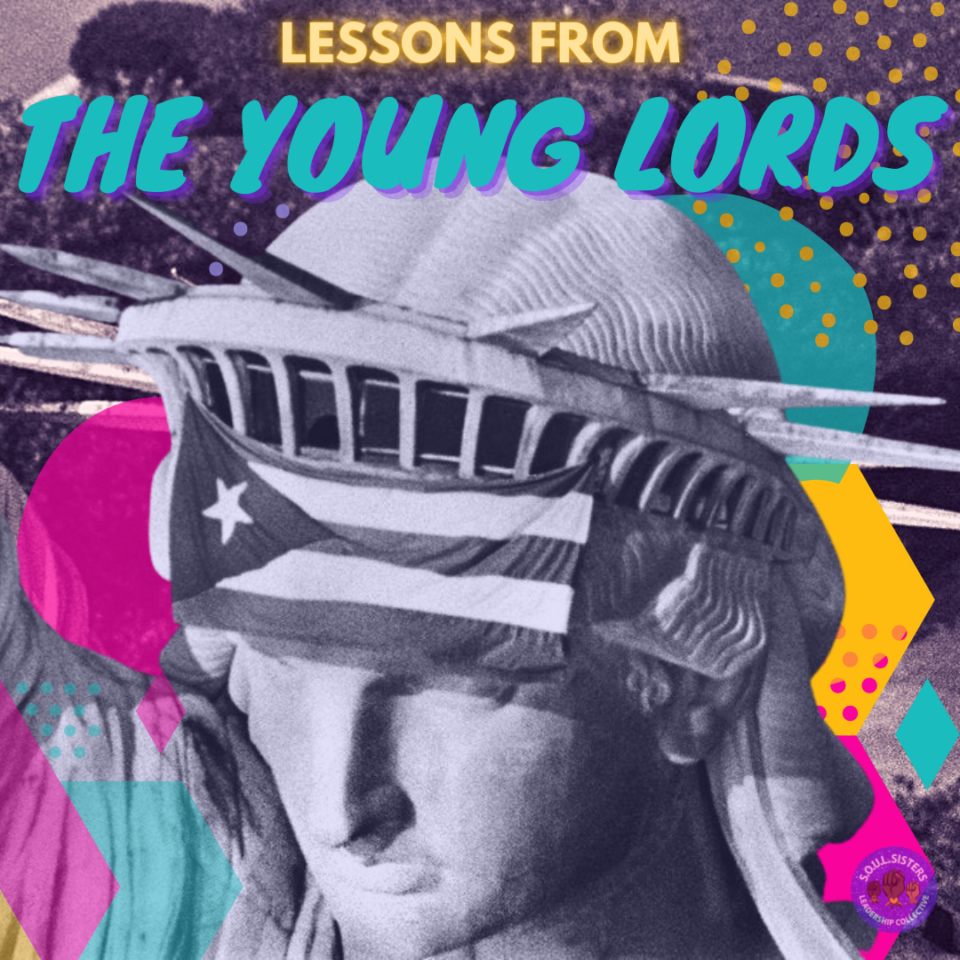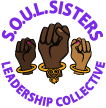By Gabriela Ramos

Many people know about the importance of the Black Panthers, and discuss their revolutionary thought leaders and organizing during Black History Month and beyond. Did you also know that a former Chicago street gang, inspired by the Panthers direct action, seized the Statue of Liberty to protest injustices against Puerto Ricans in the 1970s?
I didn’t know this until very recently – I came across news articles while navigating my way through a college curriculum based on Latinx People and Justice In New York. How would it make you feel to know that this information was withheld from you until now?
Learning about such a sensational NYC event now, years later was hard to digest. To be completely honest, it angered me. Why is it that I had to spend years in the education system to get to a point where I learned about my people’s history and their importance within social justice movements? We are taught very specific lessons about the history of the United States, so why was this omitted from the curriculum year after year? Why did I have to attend an optional class to learn what should be mandatory information? This new discovery opened a door to an abundance of conversations regarding Black and Brown rebellion and effective community organizing. Education about revolutionary movements provides clarity about the systems in place that are meant to oppress us, and what we’ve done to overcome – that we fought back.
With Critical Race Theory implemented into some school curriculums but debated on a state level, there is a lot of ground to cover. The main question I keep coming back to is: Why is it that we learn all about white-led rebellions and movements, but when it comes to Black and Brown history, we must do independent research?
Currently, lawmakers have put forth a multitude of efforts to ban Critical Race Theory and discussion of racism as an oppressive institution. Critical Race Theory is the theory that racism is not only the product of individual bias or prejudice but also an institution embedded into the justice system and its policies. This academic curriculum allows students to look at race through a more analytical lens, backed by factual information about moments in history typically glossed over in the past. Banning critical race theory from the classroom proves the point Critical Race Theory is trying to make; that slavery, segregation, class, and government legislation have created caste systems that overwhelmingly negatively affect Black, Brown, and Indigenous students. Having the ability to analytically examine modern social issues helps create an understanding of where these systems originate from, how they are still being perpetuated, and what we can collectively do to rectify injustice.
Critics have argued Critical Race Theory can cause discomfort within the classroom, but what about how hurtful and confusing it is to grow up not learning the truth about American history, our histories, as young people of color? What about how it feels to have your culture’s contributions to a country be a footnote? Coming to college and ‘electing’ to learn about Black and Brown movements that weren’t taught in middle school/high school history, upset my peers and me. We had to wait so long and live with “I-don’t-know’s” when we question why systems and socially accepted norms don’t serve us, or why we still fall victim to systems of oppression frequently without support.
Youth deserves accurate depictions of their history because it is pivotal to our education, our understanding of how oppression exists, how we have existed within oppressive systems, and what the impact of these systems is on our community. It also gives everyone the ability to develop a roadmap to justice and freedom.
Currently, I attend a school that has a diverse teaching staff, and it has significantly affected the scope of my learning. Now when I think of current Black and Brown-led movements, I think of the Young Lords and how a lot of their organizing strategy was modeled after the Black Panthers, with whom they frequently organized. The Young Lords, originally a Chicago-based street gang, turned into an activist group, and made its way to NYC joined by the ranks of Caribbean immigrants who came to New York City seeking better opportunities. They organized with the goal of Puerto Rican independence from the United States, the withdrawal of U.S. troops in Puerto Rico, righting the injustices that were occurring and an end to the overall neglect of their community.
This brings us back to the Statue of Liberty takeover protest. The Statue of Liberty signifies “Liberty Enlightening the World” – and so the statue became the site of a direct action whose coverage made the front page of nationwide major newspapers. On October 26, 1977, the Young Lords placed the Puerto Rican flag right underneath the crown of the Statue of Liberty. They did this to bring more awareness to their movements and for the release of Puerto Rican political prisoners. They were able to receive worldwide media coverage which brought attention to who they were, what they fought for, and how people can support their struggle.
The Young Lords also organized the Garbage Offensive of 1969. In 1969, their East Harlem neighborhood was neglected by sanitation workers, who would leave garbage rotting on the side of the street for weeks in minority neighborhoods. The Young Lords took action into their own hands. They swept the streets Saturday and Sunday, gathering heaps of garbage on the sidewalk and they looked to see if sanitation would pick it up. When Sanitation didn’t do their jobs, the Young Lords took the garbage into the Midtown Manhattan streets populated by suburban commuters. Seeing this as a struggle against injustice, members of Spanish Harlem joined them in anger and frustration, and they lit the garbage on fire. Due to the Garbage Offensive, the sanitation department improved its garbage removal and dumping schedules. This event was a struggle against not only municipal neglect within immigrant communities, but also environmental racism.
The Young Lords also had a history of denouncing profit-driven healthcare. They opened free health clinics where community members could receive tuberculosis and lead poisoning testing, a crucial need around that time due to its impact within Black and Brown neighborhoods. As a response to the city’s lack of healthcare access for the Black and Latinx community in the South Bronx, they took over the sixth floor of the Lincoln Hospital in 1970 – the only hospital in the area. They theorized the healthcare system was another system put in place that did not address collective needs, and thus continued to oppress and harm them.
It is ironic that Puerto Ricans left the Caribbean and migrated to NYC to escape colonization, only to be met with newer difficult conditions in NYC.
Puerto Rico became a U.S. territory as a result of the Spanish-American War, and the island of Borinquen has been occupied ever since. The political climate in Puerto Rico was one of the main reasons for this flight, as well as poor living conditions and financial hardships – we can see this narrative still occurring to this day. Destabilized homelands are a common reason as to why many people immigrate, and tale as old as time, when folks fleeing hardship migrate, they are still met with a host of new obstacles, such as discrimination, lack of access to support, and language barriers.
I began researching The Young Lords after one of my college professors made it her work to give us access to this information average curriculums could not center. My professor was also able to explain to my peers and me, why we haven’t had access to information previously, and how power, race, and oppression are embedded into systems designed to continue this suppression of information. I remember our classroom being in shock when she divulged such precious information. She knew how important it was to spread this knowledge to us and acted accordingly. Properly honoring a diverse point of reference for history is an act of care and respect. In the spirit of Sankofa, the Panthers, the Young Lords, and youth educators, I say this: Our histories are important, they are necessary, we need to learn from them, and we will use them as tools to create a more equitable future.
Written by Gabriela Ramos. Gabriela Ramos (she/her) is Pinkerton Fellow at S.O.U.L. Sisters Leadership Collective. She is a junior at John Jay College of Criminal Justice where she is majoring in Criminal Justice and minoring in Latin American and Latinx Studies. She plans to use her knowledge, passion and experience growing up in an underserved community, to be an advocate for at-risk youth and plans on carrying this out after graduation. She also intends on starting up her own non-profit in her own community to help advocate and provide services for at-risk youth and help support previous offenders reintegrate back into collective community. Gabriela intends on using this same passion to work with the S.O.U.L. Sisters team on carrying out our mission and advocating for systems-involved youth.
Interested in finding out ways to do this work with us? Head to the contact form, our social media accounts, or sign up for our Newsletter.
